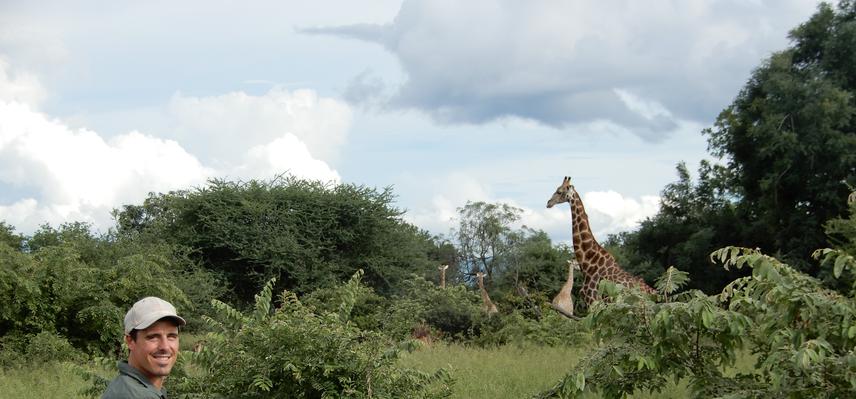Social media video featuring the project.
Giraffe Conservation Foundation Twiga Tracker - Tagging Giraffe in Zimbabwe
The Ecology of Southern Giraffe (Giraffa giraffa) in Zimbabwe – An Unknown Entity
The main aim of this study is to understand how environmental changes will drive giraffe behaviour in and between different landscapes. We specifically aim to determine the following; the past and present status of giraffe populations in Zimbabwe, and what implication these have for their conservation management; if the population dynamics of giraffe in Savé Valley Conservancy (SVC) and Gonarezhou National Park (GNP) have a similar structure to those of other populations throughout Africa, and what the drivers are for these structures; how giraffe in SVC and GNP allocate their time, and the relevant factors that influence this; giraffe forage utilization in SVC and GNP, how these may vary between seasons, and what implications these dietary choices have with regards to availability and use; the spatial ecology and movement of giraffe, using GPS satellite data, to compare between SVC, GNP and other populations in Africa.

Over the past 30 years, giraffe numbers have decreased by almost 40%, and currently population number are estimated to be around 110,000 in the wild. As these decreases have gone largely unnoticed, giraffe are now facing a silent extinction, having already been extirpated (locally extinct) in at least seven African countries, with three out of the four giraffe species being classified as either Endangered or Critically Endangered on the IUCN Red List.

Loss of suitable habitat is currently the biggest threat to giraffe and many populations across Africa are now confined to isolated areas with very little connectivity. Although giraffe is historically one of the most widespread African mammals, there is a lack of scientific research on these species which has been one of the major challenges when setting up targeted conservation management plans. Many aspects of giraffe have remained unstudied, and an understanding of their ecology and habitat plays an important role to provide baseline information on behavioural changes over time and the drivers of such change.
In Zimbabwe, very little is known about the giraffe populations as no comprehensive assessments have been done in the past. Thus, our research, in collaboration with Stellenbosch University and Giraffe Conservation Foundation, will gain a better understanding of the drivers of change in giraffe behaviour between a natural wilderness area (Gonarezhou National Park) and a transformed (previous agricultural) landscape (Savé Valley Conservancy). To achieve this goal, we will investigate the current status of giraffe in Zimbabwe, their activity budgets, feeding utilization and availability and spatial and movement ecology in the two areas and determine what effect the different habitats have on giraffe behaviour. This is particularly important as environments around Zimbabwe, and Africa, are constantly changing and being shaped by human activities and management strategies. As humans are continually encroaching on protected areas, giraffe’s adaptive capacity, or their ability to adjust to changing environments, has become of increasing relevance.
In addition, we will also identify the genetic structure of giraffe within key populations across Zimbabwe. This information is not only critical to the conservation of the species in the country but also towards the IUCN Red Listing of the Southern giraffe species, which is the only assessment still incomplete. Ultimately, our research will help with the formulation of a national strategy plan to ensure the future conservation management of giraffe in Zimbabwe and in turn, Africa-wide.
Social media video featuring the project.
Giraffe Conservation Foundation Twiga Tracker - Tagging Giraffe in Zimbabwe